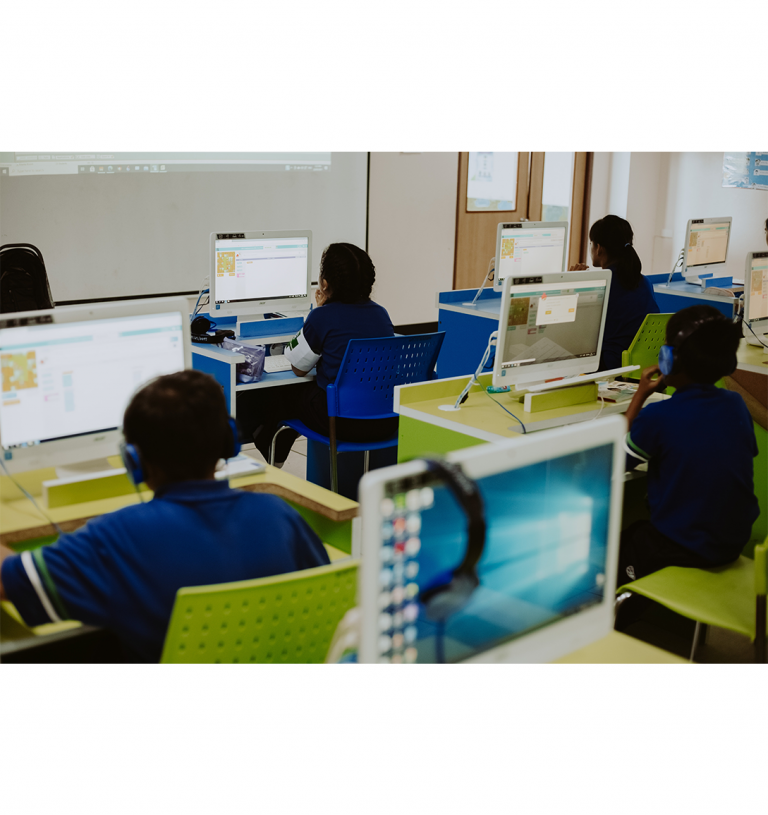The International Bilingual Education project is a mixed-method study examining the intersectionality between socioeconomic status, children with disabilities, and online learning in Ontario French Immersion.
This project is a joint effort between the University of Toronto and the Toronto District School Board (TDSB). Our research project is led by Dr. Xi Becky Chen, and the co-investigators are Diana Burchell, Roksana Dobrin-De Grâce, Dr. Elizabeth Kay Raining-Bird and Dr. Kathleen Hipfner-Boucher. The Toronto District School Board (TDSB) is the largest school board in Canada, serving almost 600 schools and just under 250,000 students per year. Furthermore, the TDSB serves a highly diverse student population as Toronto is one of the most multicultural cities in Canada.
The following summary is based on several interviews with parents whose children are in French Immersion. These accounts reflect their experiences during the COVID-19 pandemic lockdown period between March 2020 and March 2021, when schools moved all instruction to online learning. Most parents interviewed were of high socio-economic status and had no trouble with accessing technology. However, we did speak with several parents with low socio-economic status about their particular barriers. Many families received school laptops or tablets as they were more compatible with the programs that the schools were using. Online learning consisted of two formats: synchronous (the teacher was live with the students over a video-conferencing platform) and asynchronous (the teacher recorded her/himself giving a lesson or assigned tasks for the student to be completed independently). However, the format varied depending on the month, the school board, and the teacher.
There are several emerging themes in regards to the experiences of parents of children in French Immersion undertaking online learning during this period. A common concern among parents was the declining quality of instruction during online learning, with most parents preferring a synchronous teaching format. Some of the concerns raised were:
- parents struggled with their child’s behaviour while the child was asynchronous (e.g. one parent quit her job to help her kids)
- parents had to teach the material to their kids because the children didn’t understand the asynchronous instructions
- the lack of French input that the children were exposed to.
Relatedly, parents voiced their concerns over the resources used by the teachers, as it seemed that the materials and educational applications utilized differed depending on the teacher’s own preferences. There was also a lack of a curated list of resources that would be easy for parents to access, and most parents had to do their own research in order to find resources that were appropriate for their child’s age and/or level. Some parents expressed that they would have wanted more homework to work on with their kids. Additionally, parents expressed that since no textbooks were used, it was difficult for them to know how to help their children, where they were in the program, and what learning outcomes and expectations were required to achieve.
Another common theme was the lack of standardization in the program in regards to the lesson plans taught and the topics covered by the teachers. All parents said that the material and the interactions depend highly on the individual teacher. Parents who have multiple children or whose children had multiple teachers throughout the semester noticed significant differences between the teachers in quality and the type of instruction provided. A common sentiment was that the teacher was the biggest factor in their child’s learning. In addition, some parents raised concerns with regard to their child’s assessment. They received very few metrics on how their children were doing from the teachers, and since many of the parents do not speak French, they were unable to assess their children’s French proficiency themselves. In general, it seems that parents were unsure how their children were doing in the program beyond a general assessment (e.g. report cards at the end of term). Relatedly, a few parents spoke of the breakdown in communication with the teachers overall, for example, there was frustration over the lack of help in setting their child up for online learning or using some of the online platforms.
Beyond the scope of French learning outcomes, resources, and quality of instruction, parents spoke more generally regarding some advantages and disadvantages of the online format. Some parents said that they had previously tried to limit their children’s screen time but were no longer able to do so. In addition, parents had to differentiate between school and leisure screen time and set limits accordingly. When asked about the benefits of online learning, most parents expressed that their children learned quickly how to use different technologies and programs, such as Zoom or Google Classroom. A couple of parents stated that the virtual format built self-regulation and actually reduced behavioural problems. However, on the downside, students were missing the socialization of being together in person in a classroom. Taken together, most parents were dissatisfied with their experience with online learning. The most common criticisms were low quality instruction, lack of resources, inadequate amount of homework, insufficient assessment, lack of communication on the part of the teachers, lack of program standardization, too much screen time and too little socialization.
In the next few months, we hope to conduct more interviews with teachers and administration to better understand their experiences. Furthermore, we hope to share these findings in order to help improve communications between parents, teachers and administration. In the long run, we hope to use these results to reduce the barriers faced by diverse students in the French Immersion program.
Research Questions
How do stakeholders in the French Immersion program perceive the access to and availability of support?
How does socioeconomic status affect access to and support within the French Immersion program?
How has online learning affected students in the French Immersion program?




